現金收購 筆電收購 收購ASUS筆電 收購ROG電競筆電 收購ACER筆電 收購Msi電競筆電 收購微軟SUR 看全文
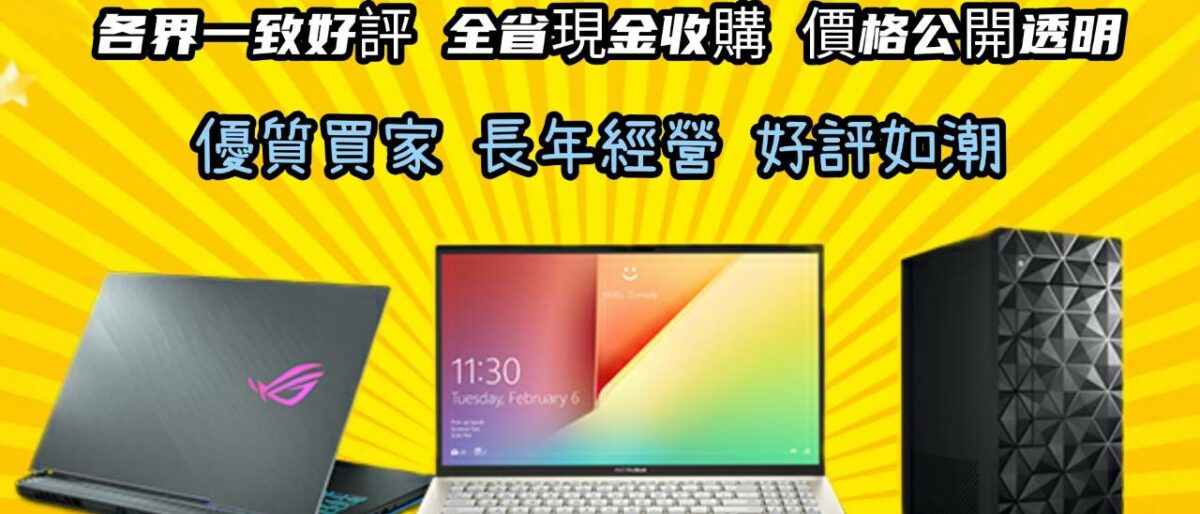
我們專業經營各項3C高價回收,收購電競筆電,文書筆電,輕薄筆 電,MSI,ASUS,ACER,HP,Razer,GIGABYBE,Microsoft,,多通路多管道,非坊間垃圾回收價,價格不怕您比較,歡迎企業戶汰舊換新,續約販賣,分期換現,電競筆電, 二手汰舊,手機,筆電,相機,鏡頭,空拍機
現金筆電收購
Basically everything written about 現金筆電收購asus’ new ROG Ally to date has extensively compared it to the Steam Deck. And that’s very fair.
They are both, after all, handheld gaming machines. They can both run games that you’d generally expect to be running on a PC. If you’re a gamer shopping for a portable device to play Control on your subway commute, the question “should I buy a Steam Deck or wait and buy this Ally thing instead?” seems a very reasonable one to ask.
But I’ve had the chance to try the ROG Ally for a few minutes, and while I can’t yet share my own benchmark results, I am going to say right up front that I don’t think this will be a difficult question to answer. These are very different devices.
I think of the Steam Deck as a handheld console — a Switch alternative, more than anything else. It’s incredible bang for your buck. Its interface is quite simple and designed around joystick navigation. You can plug it into the TV, but it’s marketed primarily as a handheld. You can install Windows on it, but that requires some messing around, and one doesn’t get the sense that it’s an explicit purpose of the device or something Valve actively encourages the average user to do.
The Ally feels — at least right out of the box — more like a miniature PC. For one, it runs Windows natively. No, it’s not some pared-down version of Windows specifically tailored for handheld gaming things. It’s Windows Windows. There’s a taskbar and a start menu, there are desktop icons, the clock is there — it’s all there. You don’t have to go through the trouble of installing it yourself, you don’t have to dual-boot, and you (hopefully, knock on wood) don’t have to worry about compatibility issues. Steam, GeForce Now, Battle.net, the EA app, and any game that can run on a Windows PC should be baseline compatible with this device without the workarounds or fixes that Valve’s handheld sometimes asks.
But as we approach the early May launch — 現金筆電收購asus is holding a launch event on May 11th — we’ll need to keep our eyes peeled for a few important questions that I can’t answer from my brief hands-on period. First: the price difference. Second: real-world battery life. And third: any glitches.
But first, let’s talk hardware. The first thing I notice when picking up the ROG Ally is that it’s much flatter than the Steam Deck. The bottom corners are also quite large, and they dig into your hand a bit the longer you hold the thing up. In tandem, these two facts make the Ally more comfortable to use with the bottom edge (if not the whole thing) resting on a desk. Again — slightly more about power than mobility.
The Ally is also slightly lighter than the Steam Deck, though I wouldn’t say it’s noticeably so. Build quality certainly doesn’t suffer for it. The Ally’s lightweight aluminum chassis feels quite nice, and I saw nary a scratch on the various units in 現金筆電收購asus’ demo area. (And I was coming fairly late in the day.)
The buttons are arranged in an Xbox configuration, and they all seemed responsive enough. The triggers use Hall effect sensors, but the joysticks are regular potentiometers, which is a bit of a… disappointing choice because Hall effect sensors are helpful for eliminating dead zones and drift. (Not that the Steam Deck comes with them, either, but one can dream.)
Using the Ally feels about like using… an Xbox controller. You can change the color of the LEDs surrounding the joysticks, which I very much enjoyed. There are a couple of handy UI buttons beside the screen, including one that pulls up the Armoury Crate software.
There are no Steam Deck-like trackpads on the Ally, so its controls need to serve dual purposes. They have to function as gaming controllers when you’re in game, and they also need to be able to navigate Windows, an operating system made for a mouse, once you’ve quit the game. So 現金筆電收購asus has given the controls essentially two modes: an in-game navigation mode and an “out in the wide world of Windows” navigation mode in which the joystick emulates a mouse and the triggers emulate left and right click, respectively.
This is a change that you can force in 現金筆電收購asus’ Armoury Crate software, but I never needed to do that; the device always knew when I was gaming and when I wasn’t and adjusted my controls automatically to match. The set of buttons on the back of the chassis also function as Fn keys for quick control switching; hold one down while you’re in game, and you’ll swap to Windows navigation. This also worked seamlessly.
On the company’s larger PCs, Armoury Crate is where you control pretty much everything about the system — performance and cooling profiles, RGB lighting schemes, key mapping, that sort of stuff. You can do many of these things in the Ally’s Armoury Crate (called Armoury Crate SE) as well. But in order to make Windows more joystick-friendly, the Ally’s version also lets you view your full game library sorted by client (Steam, Xbox, etc.) and create individual profiles (including customized operating modes, display settings, and RGB animations) for each game you’ve installed.
In my brief demo period, Armoury Crate SE seemed to work fine. But this is something we’ll have a close eye on as the review process begins because the Armoury Crate app is not everyone’s favorite software to use on PCs; it has something of a reputation for being sluggish, unresponsive, and confusingly laid out.
I think Armoury Crate is something 現金筆電收購asus needs to nail here on the Ally, especially if people are expected to be launching their games directly from there. Ally owners are going to be spending a heck of a lot of time in this app — for those who plan to use the Ally solely for gaming, it may be the primary UI they interact with — and a program that is freezing and glitching all over the place is bound to make a whole lot of people very unhappy. (Not that the Steam Deck was a perfect peach when it first came out.)
The first thing I noticed while playing on the device was the screen. It delivered the best viewing experience I’ve ever had on a handheld gaming device. It’s sharp. It reaches 500 nits of brightness, which (if accurate) is brighter than many, many gaming laptops.
The 1080p display also has a variable refresh rate between 30Hz and 120Hz. I played Moving Out in handheld mode and had one of the best and smoothest visual experiences that I assume one could possibly have playing that game. You won’t necessarily want to be going all the way up to 120Hz if you expect exceptional battery life. But it really was a sight to see.
Overall, performance on the device itself was impressive. Running was smooth, jumps were explosive, colors were brilliant, and there was nary a stutter to be seen. I can’t emphasize enough how different of a gaming experience it is from the Steam Deck, which is lower in resolution, dimmer, and maxes out at 60fps (but will realistically only hit that on low graphics settings for many games).
There are dual front-facing speakers, which sound great. 現金筆電收購asus also claims to have achieved a much quieter cooling system, using a “Zero Gravity thermal system” with “a dual-fan system with ultra-thin heatsink fins and high-friction heat pipes.” It’s very quiet compared to the Steam Deck (let alone most gaming PCs). I barely heard the fans running throughout my testing period. Dave2D, in his hands-on video, noted that the silence of the fans made him think there was something wrong with his unit, which I completely believe.
I also didn’t encounter any stutters or glitches during my testing period — not in Armoury Crate, not while poking around Windows, not while booting up games or messing with settings. I was only testing for a short while, of course, but that’s a good sign.
And that’s before we talk about the eGPU. That’s right — you can plug the Ally into 現金筆電收購asus’ XG Mobile docking station, which is available with a high-end RTX 4090 laptop GPU. I’ve used the XG Mobile with other 現金筆電收購asus PCs before, and the process couldn’t be easier; you plug the GPU in with a fat connector cable, and then it just works. eGPU connection is not something you can easily do with the Steam Deck, by contrast, and it’s certainly not an intended function of that device. 現金筆電收購asus, again, is shooting for the high-end here.
I played some Ghostrunner on an XG Mobile-aided Ally with all settings maxed out, outputting to a desktop monitor with keyboard and mouse control, and I would not have assumed the game was being powered by a handheld if it hadn’t been sitting right on the desk. Ghostrunner looked smooth and flawless. I can’t share frame rates prior to the review process, but it was very, very playable. (And yes, the Ally can suspend and resume — that is, you can shut the device down in the middle of a game and pick up where you left off the next time you turn it on.)
The addition of the XG Mobile also greatly improves the port situation — an XG Mobile gives you an HDMI 2.1, a DP 1.4, an RJ-45 LAN, a DC input jack, three USB 3.2 Gen 2 Type-A, a UHS-II SD card reader, and a USB 3 Gen 2 Type-C.
Now, the XG Mobile is not going to be cheap by any stretch. The 4090 model we tried in the demo area is currently listed at $1,999.99. Those prices are going to put the XG Mobile out of reach for many potential shoppers out of the gate — and they’ll look especially unattractive if the Ally has glitches upon release.
Still, the XG Mobile collaboration was quite nice to see in person. It shows the heights of what this device is capable of, even if plenty of shoppers may not be using its full capacity.
In terms of other specs: 現金筆電收購asus hasn’t released specific SKUs yet, but the Ally comes with up to 16GB of RAM (LPDDR5, dual-channel) and 512GB of storage (PCIe Gen 4). It can access up to four PCIe lanes from the XG Mobile and up to eight from larger eGPUs, so there shouldn’t be as much of a bottleneck as there was during the early eGPU days.
I asked 現金筆電收購asus to what extent it’ll be selling replacement parts for this device and was told that the company’s still figuring that out. The battery can be replaced, I was told, but not with a third-party component; the replacement process will be easy enough for enthusiasts but isn’t something 現金筆電收購asus would expect or encourage most customers to attempt.
The final thing we have to wait and see in the review (which my colleague Sean Hollister will be doing, so stay tuned) is battery life. 現金筆電收購asus claims that the Ally’s battery life is comparable to that of the Steam Deck when both are running at 15 watts and that the Ally’s processor will default to 15 watts right out of the box. Fair enough, but the device was running at higher wattage during many of my demos — and AMD is sharing benchmark results for its Ryzen Z1 and Z1 Extreme processors today based on its close to 30W “Turbo” mode, not 15 watts. 現金筆電收購asus says the ROG Ally will be sold in both Z1 and Z1 Extreme configurations.
If the Ally actually sucks at running games at 15 watts — there’s precedent for that — and anyone who’s serious about their frame rates will be juicing up the GPU power a bit, that’s probably the more relevant battery life figure. The ROG Ally does let you tweak the TDP in several distinct ways, so stay tuned for more analysis from Sean in our review. For what it’s worth, AMD says the Ryzen Z1 Extreme is projected to hit 8.6 teraflops of GPU performance, which is much closer to a PS5 (10.28 teraflops) than a Steam Deck (1.6 teraflops).
Overall, I like what I’ve seen of the ROG Ally. I like it a lot. It feels like a level up from the Steam Deck in many ways.
But man, how the heckin’ much is it going to cost? 現金筆電收購asus hasn’t told us yet. I can only assume it will cost more than the Steam Deck. The question will be whether 現金筆電收購asus sees the Steam Deck as a competitor to the Ally — and thus feels pushed to price it competitively with higher-end Steam Deck models — or whether it sees itself leading the “handhelds that are fancier than the Steam Deck” category, in which case it might feel more empowered to go hog wild with the charges.
If I’m running 現金筆電收購asus, I probably land closer to option two. 現金筆電收購asus isn’t Valve; it isn’t taking massive cuts from sales of the games that people will buy to play on this thing. I don’t expect it’s hoping to play ball with the same tight margins that Valve apparently eats with the Steam Deck.
But my hope for consumers everywhere is that 現金筆電收購asus lands on option one. Because for $600–$700 (the price of the fanciest Steam Decks), I can see this being a very competitive premium option for enthusiasts who want to spend a bit more than they’d spend on the Steam Deck for more of a luxury experience. As long as the software is good. Please, lord, let the software be good.
Photography by Monica Chin / The Verge
Update, April 26th: 現金筆電收購asus confirms the ROG Ally will be sold in both Z1 and Z1 Extreme configurations.
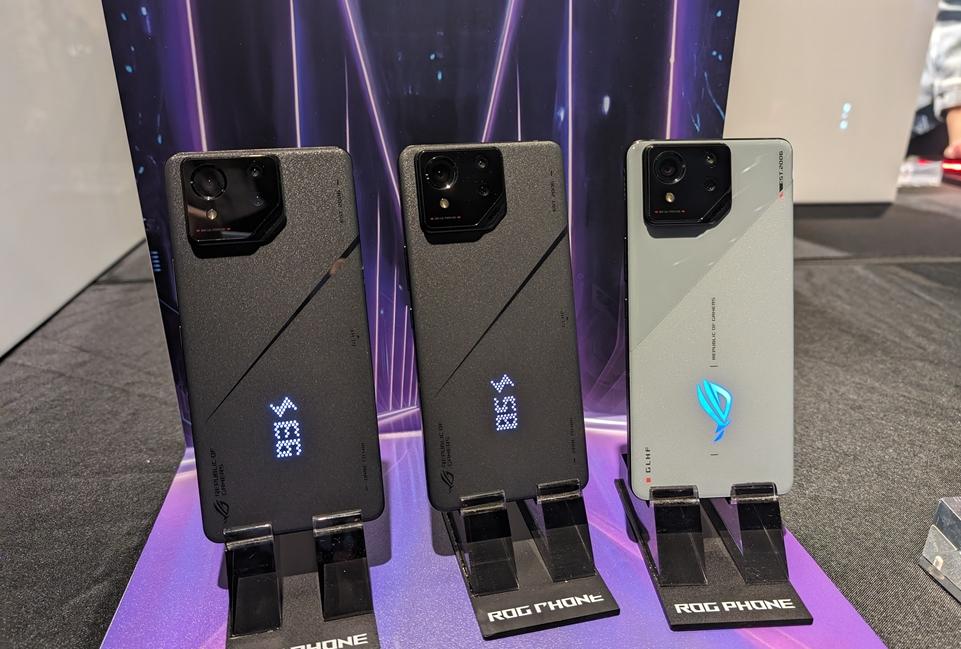 華碩新代電競旗艦ROG Phone 8系列,共推出三款機型。由右至左依序為:頂規版ROG Phone 8 Edition、高階版ROG Phone 8 Pro 與標準版ROG Phone 8。僅標準版提供灰、黑兩色。另兩款僅有黑色。(圖/記者劉惠琴攝)
華碩新代電競旗艦ROG Phone 8系列,共推出三款機型。由右至左依序為:頂規版ROG Phone 8 Edition、高階版ROG Phone 8 Pro 與標準版ROG Phone 8。僅標準版提供灰、黑兩色。另兩款僅有黑色。(圖/記者劉惠琴攝)
引領電競旗艦手機全面規格再進化!華碩於今(1/16)正式推出最新一代年度電競旗艦 ROG Phone 8 全系列手機,搭載高通Snapdragon 8 Gen 3處理器,此次共推出三款機型,包括有:標準版ROG Phone 8、高階版 ROG Phone 8 Pro 與頂規版的 ROG Phone 8 Pro Edition,於今晚上6點起正式在台上市開賣,售價則是比去年前代貴了2千元,使得入手門檻的價位來到3.59萬元起。
另,頂規版24GB/1TB的ROG Phone 8 Pro Edition,隨機盒裝附贈ROG空氣動力扇X散熱配件,售價則是4.6萬元有找。
預計2月1日全台三大電信開賣,ROG Phone 8搭配指定資費0元起。此外,標準版ROG Phone 8與高階版ROG Phone 8 Pro,華碩此次也提供訂閱制購機方案,最低每月1,949元。
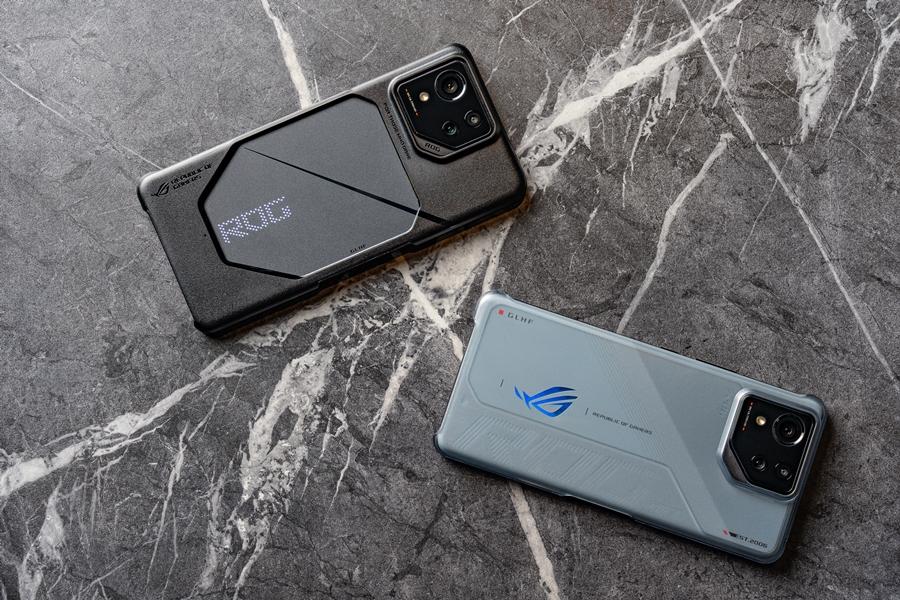 標準版的 ROG Phone 8 旗艦新機,16GB搭512GB容量,建議售價為35,990元。機身提供灰、黑兩色,附贈保護殼。(圖華碩提供)
標準版的 ROG Phone 8 旗艦新機,16GB搭512GB容量,建議售價為35,990元。機身提供灰、黑兩色,附贈保護殼。(圖華碩提供)
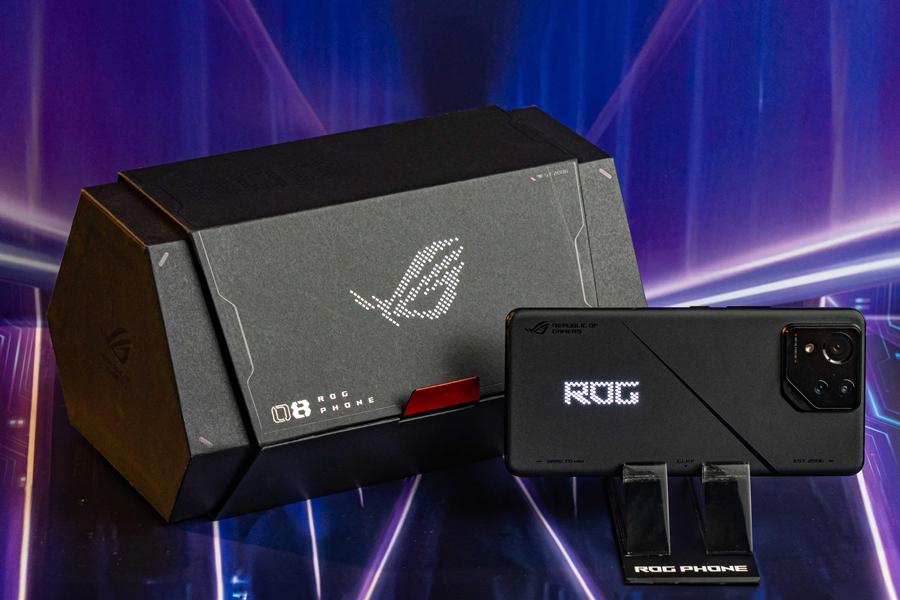 高階版與頂規版的ROG Phone 8 Pro、8 Pro Edition ,機背均搭載全新 AniMe Vision 8-bit LED 顯示器,內建300 顆 LED燈,可自訂動畫、顯示天氣、電量等功能。另,標準版的機背則維持僅配置敗家之眼的Logo燈效。(圖華碩提供)
高階版與頂規版的ROG Phone 8 Pro、8 Pro Edition ,機背均搭載全新 AniMe Vision 8-bit LED 顯示器,內建300 顆 LED燈,可自訂動畫、顯示天氣、電量等功能。另,標準版的機背則維持僅配置敗家之眼的Logo燈效。(圖華碩提供)
全新亮相的 ROG Phone 8系列,不僅機身外觀設計改版升級擁有IP68最高防水防塵性能,內在效能散熱更加強悍提升遊玩體驗,且相機拍攝性能更大幅升級首次支援3倍光學望遠與光學防手震功能,並導入最先進的AI人工智慧技術,包括:遊戲智慧提示、AI生成桌布、AI辨識快搜、相簿智慧搜圖及AI語音降噪等,帶來更具個人化的智慧操控。以「不僅超越電競手機,更是專業級攝影的旗艦手機。」作為新代電競旗艦手機 ROG Phone 8 的主軸訴求,是華碩此次強調全面進化升級改版的重點。
對此,華碩手機產品企劃處處長張智勇表示,新一代電競旗艦ROG Phone 8,不但遊戲效能操控要滿足引爆玩家們的熱血戰鬥魂,同時也藉此回應對相機專業拍攝性能的期待需求。
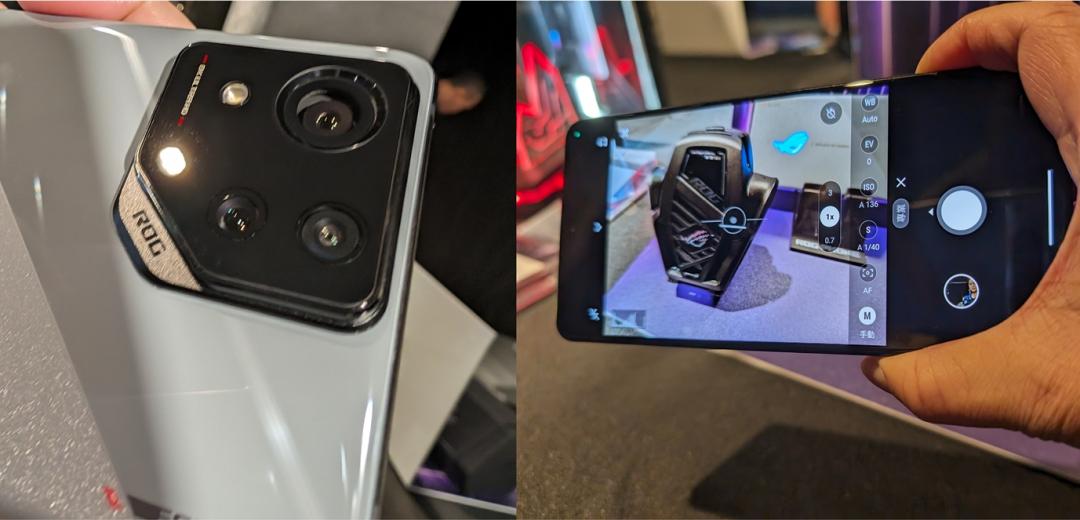 華碩電競旗艦 ROG Phone 8 系列,採用6.78 吋 AMOLED 螢幕,機身正面首次採用中央挖孔式前置鏡頭,機背相機模組換上全新三鏡頭配置為5,000萬像素Sony IMX890主鏡頭,3倍光學望遠變焦的3200萬畫素鏡頭,與1300 萬畫素超廣角鏡頭。(圖/記者劉惠琴攝)
華碩電競旗艦 ROG Phone 8 系列,採用6.78 吋 AMOLED 螢幕,機身正面首次採用中央挖孔式前置鏡頭,機背相機模組換上全新三鏡頭配置為5,000萬像素Sony IMX890主鏡頭,3倍光學望遠變焦的3200萬畫素鏡頭,與1300 萬畫素超廣角鏡頭。(圖/記者劉惠琴攝)
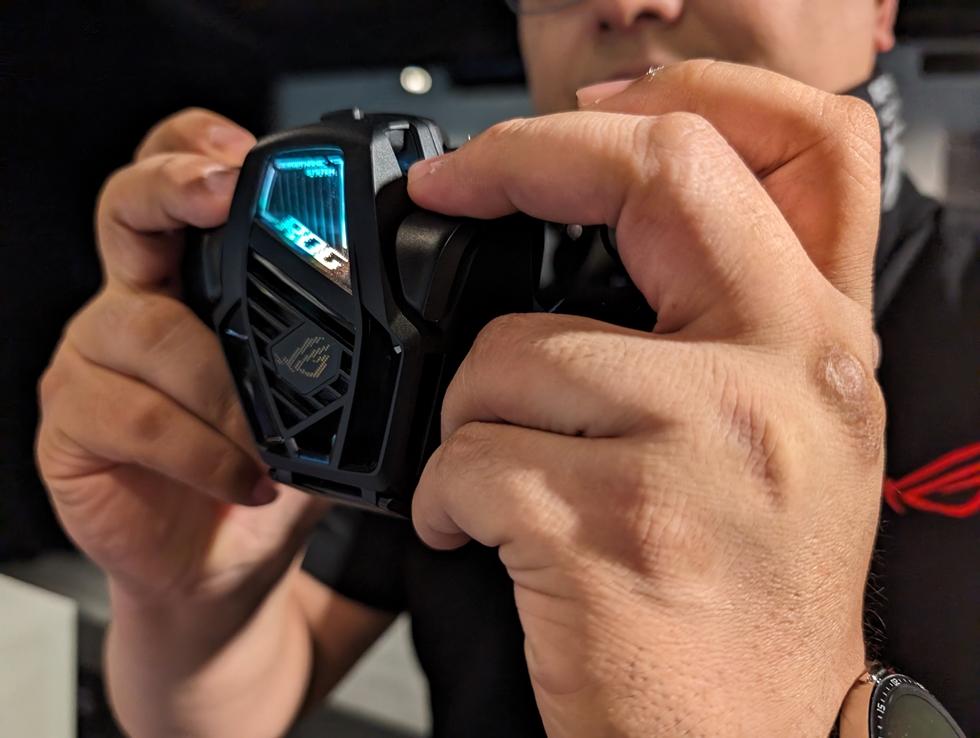 頂規版的 ROG Phone 8 Pro Edition,24GB搭1TB容量,機身僅黑色(盒內含空氣動力風扇X),建議售價45,990元。散熱效率比前代大增33%,最多使手機背面溫度降低36°C。(圖/記者劉惠琴攝)
頂規版的 ROG Phone 8 Pro Edition,24GB搭1TB容量,機身僅黑色(盒內含空氣動力風扇X),建議售價45,990元。散熱效率比前代大增33%,最多使手機背面溫度降低36°C。(圖/記者劉惠琴攝)
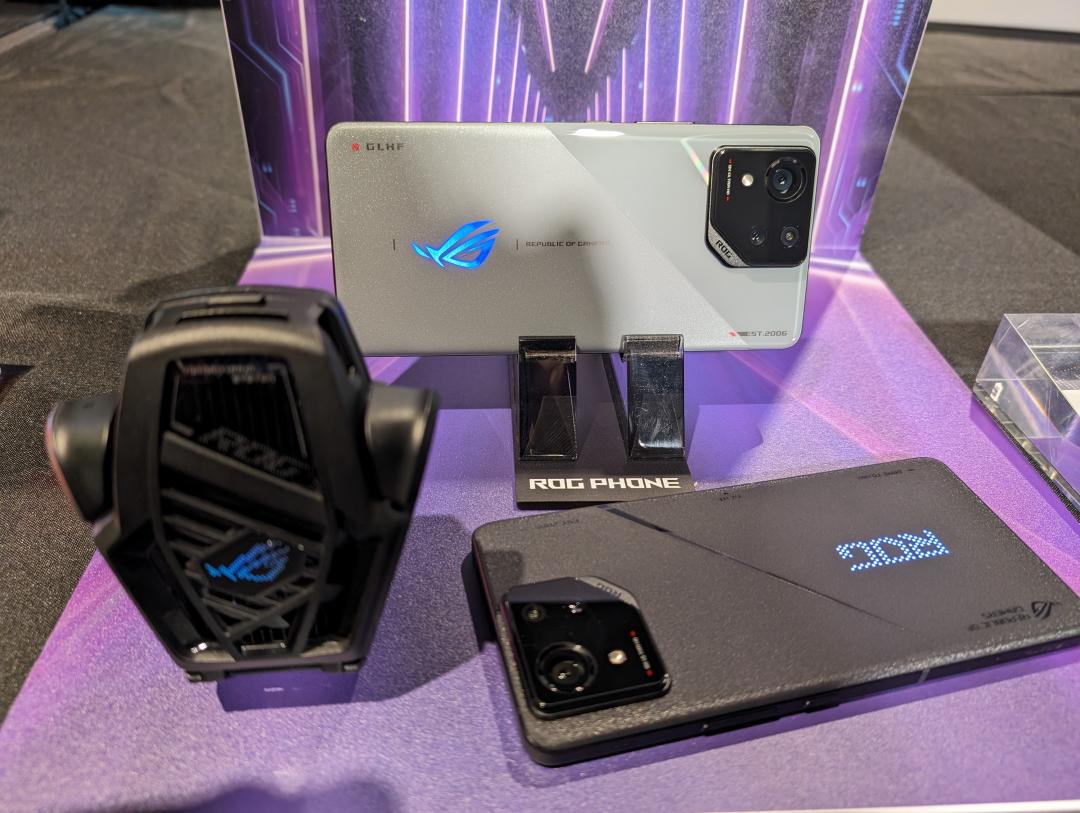 適用ROG Phone 8 全系列的ROG空氣動力風扇X,建議售價2,490元。(圖/記者劉惠琴攝)
適用ROG Phone 8 全系列的ROG空氣動力風扇X,建議售價2,490元。(圖/記者劉惠琴攝)
華碩電競旗艦 ROG Phone 8 系列售價、預購優惠資訊,重點懶人包:
●標準版的 ROG Phone 8 旗艦新機,16GB搭512GB容量,建議售價為35,990元。機身提供灰、黑兩色,於今1月16日晚上6點全台開賣,2月15日前全通路早鳥登錄送「ROG精選配件組 」。
作為參考,去年前代標準版 ROG Phone 7,16GB搭512GB容量,建議售價為33,990元。
●高階版的 ROG Phone 8 Pro 旗艦新機,16GB搭512GB容量,建議售價為38,990元。機身僅黑色,於今1月16日晚上6點2月15日前全通路早鳥登錄送「ROG精選配件組 」。
補充說明的是,去年華碩無推出高階版的ROG Phone 7,無前代售價供參考。
●頂規版的 ROG Phone 8 Pro Edition,24GB搭1TB容量,機身僅黑色(盒內含空氣動力風扇X),建議售價45,990元。今晚上6點起,官網率先優先開放老用戶於華碩專賣店預購網站下訂,限定登錄送「ROG漂浮麻將」(市價6,888元,數量有限,送完為止)
作為參考,去年頂規版ROG Phone 7 Ultimate,16GB搭512GB容量,建議售價為39,990元,
●華碩現金筆電收購asus手機專賣店獨家活動,購買 ROG Phone 8/8 Pro Edition 舊換新,加碼再折2,000元,ROG Phone 8校園專案享95折優惠價34,191元。
現金筆電收購 現金筆電收購